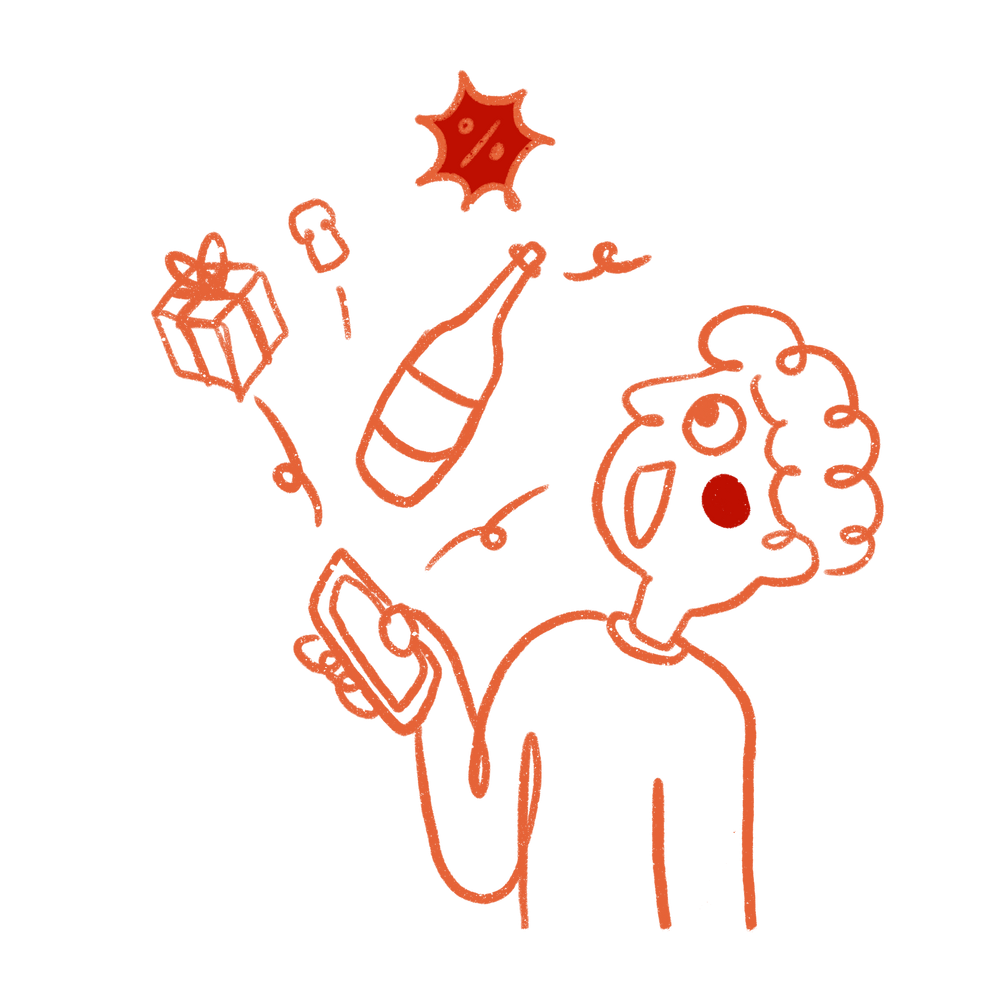Barolo, Barbaresco, Brunello: The Three Bs of Italian Excellence
In the rich Italian wine landscape, three appellations stand out for their international prestige, history, and ability to produce exceptional age-worthy wines: Barolo, Barbaresco, and Brunello di Montalcino. These "Three Bs" constitute the golden triangle of Italian wines, offering different expressions of the peninsula's viticultural greatness.
Despite their shared renown, these appellations present fundamental differences - in their terroirs, regulations, and of course, taste profiles. Understanding these nuances allows for a fuller appreciation of their uniqueness and an exploration of the richness of Italian wine heritage.
Geography and Terroirs: Three Regions, Three Identities
Barolo and Barbaresco: The Brothers of Piedmont
Located just 15 kilometers apart in the Langhe hills of Piedmont (northwestern Italy), Barolo and Barbaresco share the same emblematic grape variety: Nebbiolo. However, their terroirs reveal subtle but significant differences:
Barolo:
- Geographical area: Larger (approximately 1,800 hectares), comprising 11 communes including Barolo, La Morra, Serralunga d'Alba, Monforte d'Alba, and Castiglione Falletto
- Altitude: 300-500 meters
- Soils: Great diversity, mainly Tortonian calcareous marls (more clayey, to the west) and Serravallian (more calcareous and sandy, to the east)
- Climate: Continental with Alpine influences, slightly cooler temperatures
Barbaresco:
- Geographical area: Smaller (approximately 700 hectares), comprising only 3 main communes: Barbaresco, Neive, and Treiso
- Altitude: 200-400 meters
- Soils: Mainly Tortonian calcareous marls, generally more calcareous and less clayey than in Barolo
- Climate: Slightly milder thanks to the proximity of the Tanaro River, which moderates temperatures
Brunello di Montalcino: The Tuscan Star
More than 300 kilometers south of the Piedmontese appellations, Brunello di Montalcino is located in Tuscany, in the heart of the famous Chianti region:
Brunello di Montalcino:
- Geographical area: Approximately 2,100 hectares around the medieval town of Montalcino
- Altitude: 120-650 meters, with significant variations that influence wine styles
- Soils: Very varied, ranging from clay-limestone to galestro (schist) and alberese (compact limestone), with subsoils rich in marine fossils
- Climate: Mediterranean with continental influences, warmer and drier than Piedmont, but with significant variations depending on exposure and altitude
Grapes and Winemaking: Traditions and Regulations
Piedmont's Nebbiolo
Barolo and Barbaresco are both made from 100% Nebbiolo, renowned for:
- Its late ripening
- Its powerful tannins and high acidity
- Its characteristic aromas of rose, tar, cherry, truffle, and spices
- Its relatively light color that contrasts with its power on the palate
However, the regulations differ:
Barolo DOCG:
- Minimum aging: 38 months, including 18 in wooden barrels
- For the "Riserva" designation: 62 months minimum
- Minimum alcohol content: 13%
Barbaresco DOCG:
- Minimum aging: 26 months, including 9 in wooden barrels
- For the "Riserva" designation: 50 months minimum
- Minimum alcohol content: 12.5%
These regulatory differences reflect the natural characteristics of the terroirs: Barbaresco, slightly earlier to mature and less austere, requires less time to soften.
Tuscany's Sangiovese
Brunello di Montalcino DOCG:
- Grape variety: 100% Sangiovese, in its local variant called "Brunello" (little brown one), selected for its small concentrated berries
- Minimum aging: 5 years from harvest, including at least 2 years in wooden barrels and 4 months in bottle
- For the "Riserva" designation: 6 years minimum
- Minimum alcohol content: 12.5%
Sangiovese differs from Nebbiolo in:
- A generally deeper color
- Aromas of black cherry, plum, violet, leather, and sometimes balsamic notes
- A different tannic structure, often rounder but equally present
- A characteristically high acidity
Taste Profiles: Three Expressions of Italian Greatness
Beyond the technical differences, it is in the glass that the distinct personalities of these three great wines are fully revealed:
Barolo: "The King of Wines, Wine of Kings"
- Appearance: Garnet red with orange reflections as it ages
- Aromas: Complex and deep - faded rose, tar, truffle, black cherry, licorice, tobacco, and spices
- Palate: Powerful and austere in its youth, with firm tannins that require time to soften. Great depth, endless finish
- Evolution: Exceptional aging potential (20-30 years for great vintages)
- Character: Majestic, imposing, intellectual
Barbaresco: "The Queen of Wines"
- Appearance: Slightly less intense garnet red, evolving toward orange
- Aromas: Similar to Barolo but often more floral (violet, fresh rose) with more prominent red fruit notes
- Palate: More accessible in its youth, silkier tannins, elegance rather than raw power
- Evolution: Excellent aging ability (15-25 years)
- Character: Elegant, refined, seductive
Brunello di Montalcino: "The Tuscan Star"
- Appearance: Deeper ruby red, evolving toward garnet
- Aromas: Black cherry, plum, violet, with notes of leather, tobacco, undergrowth, and sometimes Mediterranean herbs
- Palate: Rich and full-bodied, present but generally rounder tannins than Nebbiolo, marked acidity that brings freshness and length
- Evolution: Excellent aging potential (15-25 years)
- Character: Harmonious, Mediterranean, sunny while remaining elegant
Regional Differences in the Glass
Within Barolo: A World of Contrasts
One of the fascinations of Barolo lies in the marked differences between its communes:
- La Morra and Barolo: Often more supple and fragrant, accessible younger
- Serralunga d'Alba and Monforte d'Alba: More powerful, structured, and requiring more patience
- Castiglione Falletto: Balance between power and elegance
Among the emblematic Barolo producers we are proud to offer, Giovanni Rosso stands out for its wines of great finesse and typicity, particularly from vineyards located on the famous terroir of Serralunga d'Alba.
Within Barbaresco: Subtle Variations
- Barbaresco: Elegance and finesse
- Neive: Slightly more structured and robust
- Treiso: Often more mineral, with more marked acidity
The Poderi Colla estate, which we have the pleasure of representing, produces Barbaresco wines of remarkable authenticity, combining tradition and respect for terroir.
Within Brunello: North vs South
- North and East (higher): Finer, more elegant, with more marked acidity
- South and West (warmer): Richer, more concentrated and powerful
Food Pairings: At the Table with the Three Bs
These great wines deserve a table at their height, but their differences influence the proposed pairings:
With Barolo
- Risotto with Piedmontese white truffles
- Brasato al Barolo (beef braised in Barolo)
- Game birds (pheasant, partridge)
- Aged Italian cheeses (36-month Parmigiano Reggiano, Castelmagno)
With Barbaresco
- Tajarin with porcini mushrooms
- Rabbit Piedmontese style
- Beef tenderloin with morels
- Mountain tomme, Piedmontese Toma
With Brunello
- Bistecca alla fiorentina (grilled T-bone steak)
- Osso buco
- Cinghiale in umido (braised wild boar)
- Herb-roasted lamb of Tuscany
- Aged Pecorino
Vintages: Keys to Understanding
Understanding the differences between these three appellations also involves knowledge of vintages, with some regional differences to note:
Common Great Recent Vintages
- 2016: Exceptional in all three regions
- 2010: Classic and perfectly balanced
- 2013: Elegant and precise
Regional Differences
- 2014: Difficult in Piedmont, better in Tuscany
- 2017: Hot and early, more favorable to Brunello than to Piedmontese wines
- 2018: Fresh and elegant in Piedmont, more variable in Tuscany
How to Taste Them: Practical Advice
To fully appreciate the nuances of these great wines:
- Ideal serving temperature: 16-18°C for all
- Decanting:
- Young Barolo: 2-3 hours
- Young Barbaresco: 1-2 hours
- Young Brunello: 1-2 hours
- Older wines (all): 30 minutes maximum
- Glassware: Large Burgundy-style glasses with a wide opening to capture the aromatic complexity
Conclusion: Three Expressions of Excellence
Barolo, Barbaresco, and Brunello represent three distinct expressions of Italian viticultural excellence. Sharing a common philosophy of uncompromising quality and deep respect for their respective terroirs, they nevertheless offer very different sensory experiences.
- Barolo impresses with its depth, complexity, and ability to traverse decades
- Barbaresco seduces with its elegance, refinement, and relative accessibility
- Brunello charms with its balance between Mediterranean power and Tuscan finesse
Exploring the "Three Bs" of Italian viticulture is to embark on a fascinating journey through the terroirs, traditions, and flavors that make Italy one of the world's greatest wine-producing countries. Whether you are a seasoned collector or a curious amateur, these legendary appellations will offer you memorable tasting moments and an incomparable window into the richness of Italian wine heritage.






